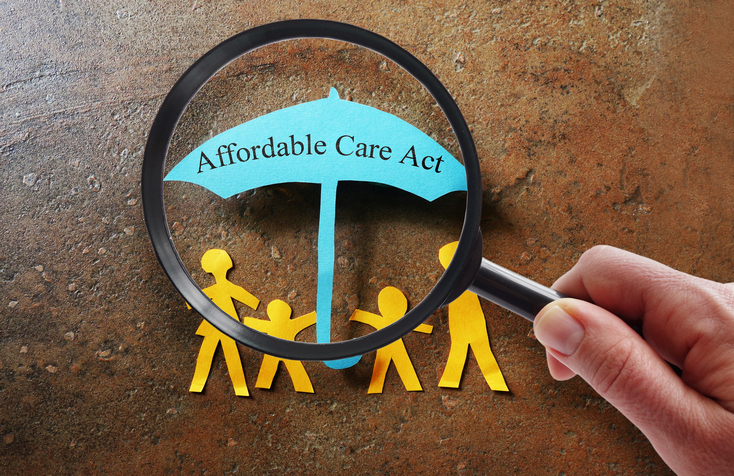
National health IT coordinator Dr. Vindell Washington speaks at the Connected Health Conference, Dec. 13, 2016 at National Harbor, Maryland.
This isn’t the first time there has been such hope, but this week could mark a turning point for interoperability of health information.
At HIMSS16 last February, 17 health IT vendors, five major health systems and a dozen industry organizations pledged to provide wider consumer access to health data, avoid information blocking and adopt federally recognized interoperability standards. Though the pledge was nonbinding, participants have been hard at work this year trying to make the vision a reality.

With the Rise of AI, What IP Disputes in Healthcare Are Likely to Emerge?
Munck Wilson Mandala Partner Greg Howison shared his perspective on some of the legal ramifications around AI, IP, connected devices and the data they generate, in response to emailed questions.
This week, at the HIMSS-produced Connected Health Conference in National Harbor, Maryland, some of those signees staged a live demonstration of interoperability by pulling in medication lists for individual patients from multiple sources. Representatives from New York-Presbyterian Hospital and Trinity Health joined with vendors Epic Systems and Cerner to show how the Fast Healthcare Interoperability Resources (FHIR) standard facilitated data sharing.
National health IT coordinator Dr. Vindell Washington moderated the session and hosted the demo.
During a media availability afterward, Washington discussed the frustration patients have felt in trying to gain access to their own records as healthcare providers take their time building interoperable systems and setting up patient portals.
“I feel for patients,” said Washington, who has been in charge of the Office of the National Coordinator for Health Information Technology only since August. and he will step down when the Obama Administration ends next month.
“I think probably most of us have done that search for their [loved ones’] information or information on our own behalf,” he continued. A board-certified emergency physician, Washington noted that he personally had experienced the problem in helping his mother navigate a trip to the ER.
“I know that there’s still work to be done, but there’s just a lot of progress … that’s present, even relatively recently, over the last maybe two or three years,” Washington said. “I think it’s a process.”
He said that hospitals have started to break down data silos within their own walls and with affiliated physicians, and he cited the work of his predecessors at ONC in helping to push that along. “It doesn’t mean that there isn’t work to be done,” Washington added.
The coordinator, who previously served as CMIO of the Franciscan Missionaries of Our Lady Health System in Baton Rouge, Louisiana, and was president of the system’s medical group, recommends that providers focus on three areas as they build interoperability. It all starts with a “culture of exchange,” he said.
“The culture part is still the most important. It’s this idea that, as a patient, I should have access to my data, I have a right to have access to my data, that I, as a provider, should not feel anxious if someone is asking for their information,” Washington explained.
Historically, a patient asking for copies of a medical record was likely considering a malpractice suit. That has changed, but some hospitals’ attitudes have not.
“When I first trained, that was sort of your first clue that someone was going to send you a subpoena. The idea that that is really more the norm and I may need it for coordinating my care or the concept of the concept of the empowered patient, that is relatively new,” Washington said.
The second piece is adherence to standards for interoperability.
“We’ve made a lot of progress on the FHIR standards for med lists, for medications, because the resource was built out, but we didn’t have to get to the last detail — I dotted and T crossed — until we were really doing the work,” Washington said. “I think that’s one of the value propositions around that.”
The third part is payment strategy. It has to make economic sense for health systems to share records with competitors.
“Once you get to a situation where it’s not a detriment to me financially to exchange information and it’s actually in my benefit, you change the table. As an ED doc, I certainly try hard to get information about people,” including CAT scans done at competing hospitals. “But if there are too many barriers there, then I would repeat your CAT scan,” Washington said.
The barriers are falling, ever so slowly.
“You could talk to your CFO about the 10 things you can fund this year,” Washington continued. “When you put that number in there that says you are going to connect to the competing hospital, there has to have a business justification.” That only happens in a “patient-centered” environment like an Accountable Care Organization and if the connection helps reduce the cost of delivering care, he said.
The same day of the demo, the CommonWell Health Alliance, made up of pretty much every major EHR vendor except Epic, announced that it would adopt the Carequality interoperability framework, which Epic has championed. Specifically, CommonWell said it would build a Carequality-compliant version of its record locator and would explore future collaborations.
This was unrelated to the demo at the Connected Health Conference. Washington said the news certainly made him happy, but noted that it really only covers the provider side.
“Much of what those two organizations are doing facilitates provider exchange,” including direct patient queries, the national coordinator said. “That really isn’t a space where you’d expect consumers to be able to take advantage of it.”
Photo: Neil Versel/MedCity News














